
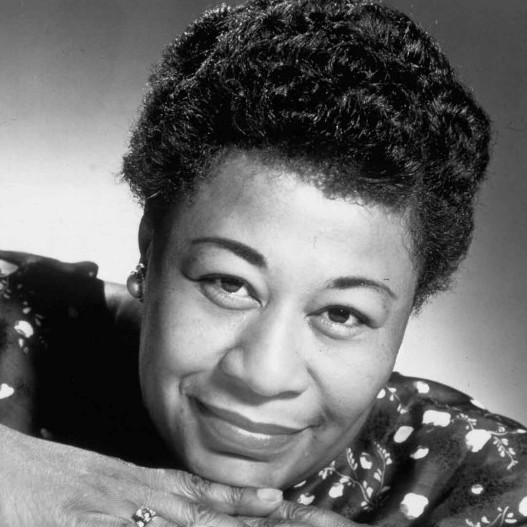
Ella Fitzgerald (1917-1996)
Singer, bandleader, performer. Another jazz musician with an exceptionally long career.
The early days
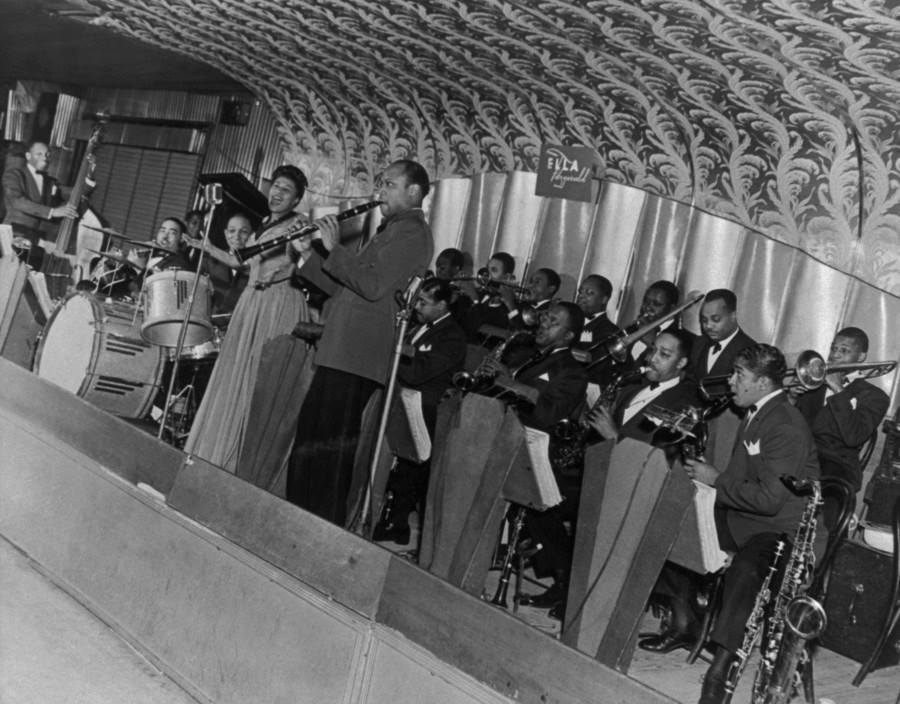
Ella Fitzgerald first performed on stage in 1934 in the Apollo Ballroom’s talent contest. Which she won. But it was her meeting with Chick Webb in 1938 that led to her singing with his band at the Savoy Ballroom, and later leading the band after his death in 1939. Her first major hit was with ‘A-tisket, A-tasket’.
The Savoy Ballroom was of course the ‘home of happy’ feet, and Whitey’s Lindy Hoppers, the lindy hop troupe led by Frankie Manning. And Chick Webb’s Orchestra was the Savoy’s house band for years.
The 1940s, and a solo career
In 1942 Ella moved on with a solo career, managed by Norman Granz, who later founded Verve records and was instrumental in jazz history. Ella was, of course, just beginning. During the 40s she developed her signature scatting style, working closely with bebop musicians.
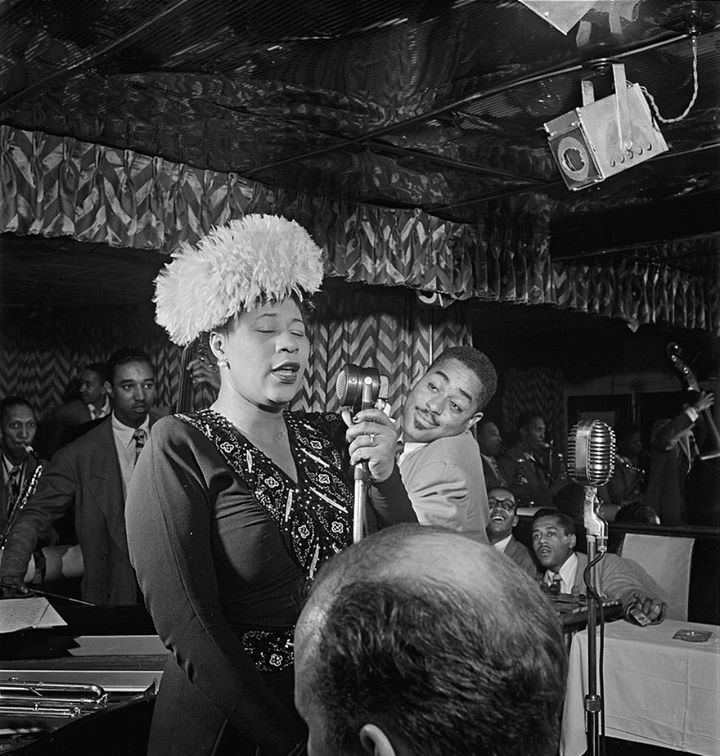
The song books and the 1950s
By the 1950s Ella was the centrepoint of Verve records, and in 1956 she released her first ‘song book’ album: Ella Fitzgerald Sings the Cole Porter Songbook. Over the next ten years she released eight of these albums celebrating the work of important composers.
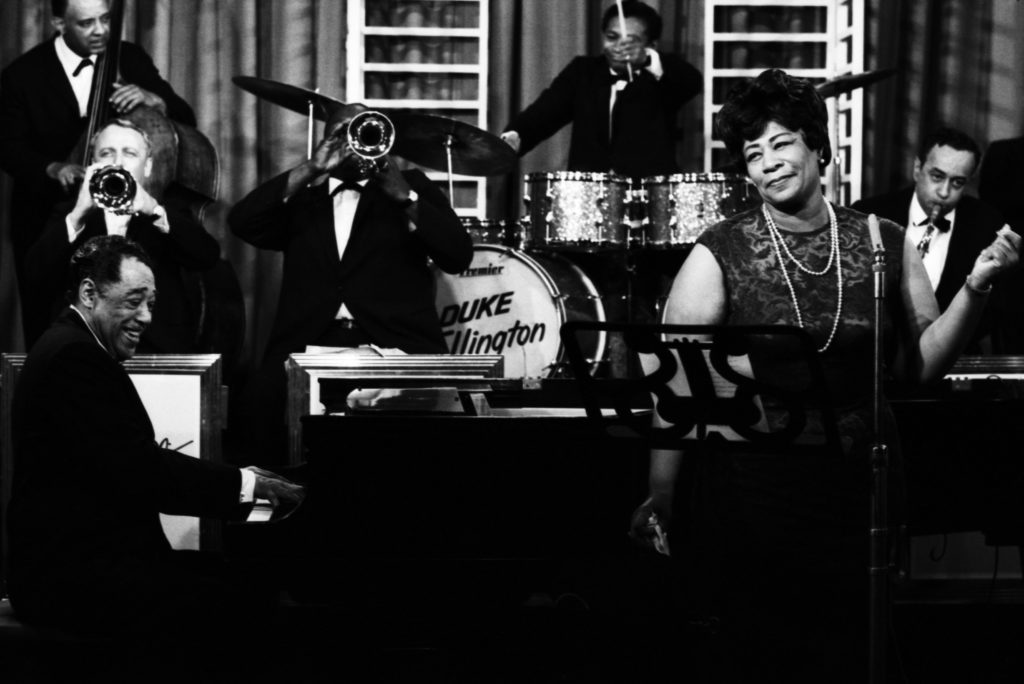
The Duke Ellington Songbook is one of the most important for dancers, as she scats ‘vocals’ for Ellington’s instrumental arrangements. And, most importantly Ella sings with Ellington’s band on the album.
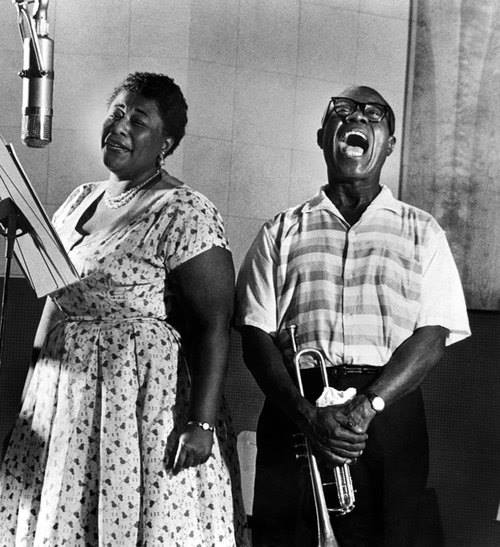
The live recordings
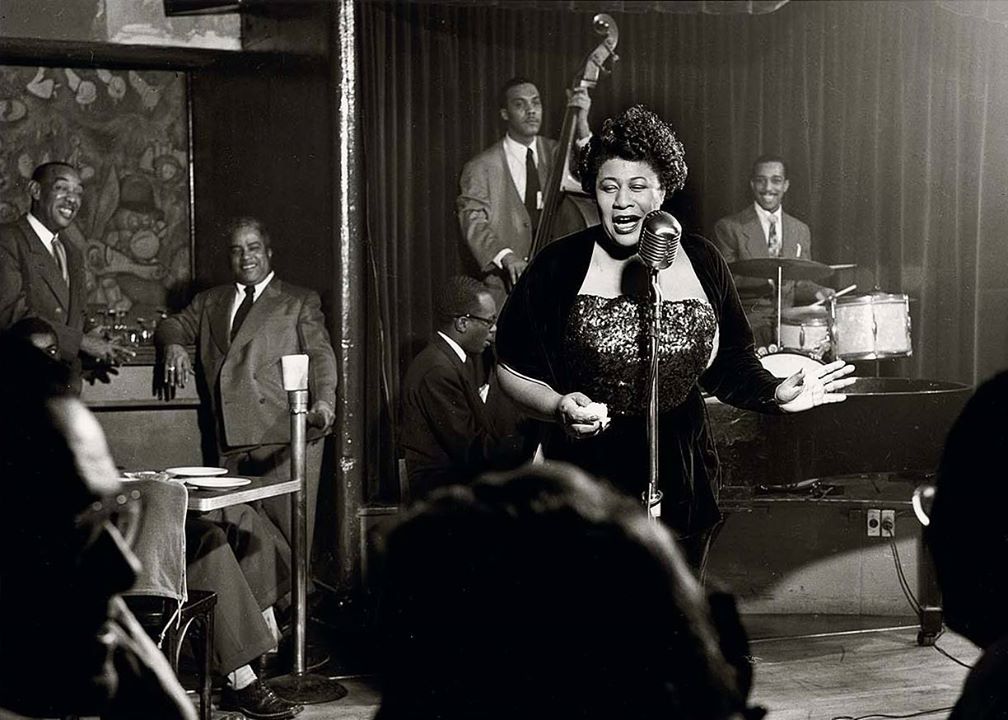
Ella Fitzgerald’s career continued on into the 70s, but perhaps her last greatest recordings for dancers were her live concerts in the 60s and 70s. Twelve Nights in Hollywood was recorded live at the Crescendo nightclub to a smaller audience. They capture some of Ella’s glorious scatting and famously misremembered lyrics.
Listen
Our Ella Fitzgerald Spotify Playlist:
- Holiday In Harlem 1937 Chick Webb and his Orchestra
- Rock It For Me 1937 Chick Webb and his Orchestra
- Undecided 1939 Chick Webb and his Orchestra
- My Heart Belongs To Daddy 1939 Chick Webb and his Orchestra
- Bet'cha Nickel 1939 Ella Fitzgerald and her Famous Orchestra
- The Jumpin' Jive 1939 Ella Fitzgerald and her Famous Orchestra
- St. Louis Blues 1939 Ella Fitzgerald and her Famous Orchestra
- Blue Skies 1939 Ella Fitzgerald and her Famous Orchestra
- Mama, Come Home 1942 Ella Fitzgerald and The Four Keys
- It's Only A Paper Moon 1945 Ella Fitzgerald and The Delta Rhythm Boys
- The Frim Fram Sauce 1946 Ella Fitzgerald and Louis Armstrong with Bob Haggart's Orchestra
- Petootie Pie 1946 Louis Jordan and his Tympany Five with Ella Fitzgerald
- Smooth Sailing 1951 Ella Fitzgerald
- Every Day I Have The Blues 1956 Count Basie and his Orchestra
- Mood Indigo 1956 Ella Fitzgerald
- Rocks In My Bed 1956 Ella Fitzgerald acc. by Ben Webster, Paul Smith, Stuff Smith, Barney Kessel, Joe Mondragon, Alvin Stoller
- Stars Fell On Alabama 1956 Louis Armstrong, Ella Fitzgerald, Oscar Peterson, Herb Ellis, Ray Brown, Buddy Rich
- You Turned the Tables on Me 1957 Ella Fitzgerald
- Swingin' Shepherd Blues 1957 Ella Fitzgerald
- Gee, Baby, Ain't I Good To You? 1957 Ella Fitzgerald and Louis Armstrong (with Oscar Peterson, Herb Ellis, Ray Brown, Louie Bellson)
- A Fine Romance 1957 Ella Fitzgerald and Louis Armstrong (with Oscar Peterson, Herb Ellis, Ray Brown, Louie Bellson)
- Take The "A" Train 1957 Ella Fitzgerald with Duke Ellington's Orchestra
- Bli-Blip 1957 Ella Fitzgerald with Duke Ellington's Orchestra
- Jersey Bounce 1961 Ella Fitzgerald acc. by Lou Levy, Herb Ellis, Joe Mondragon, Stan Levey
- Cry Me a River 1961 Ella Fitzgerald acc. by Lou Levy, Herb Ellis, Joe Mondragon, Stan Levey
- Clap Hands, Here Comes Charlie! 1961 Ella Fitzgerald acc. by Lou Levy, Herb Ellis, Joe Mondragon, Stan Levey
- The One I Love Belongs To Somebody Else 1961 Ella Fitzgerald acc. by Lou Levy, Herb Ellis, Joe Mondragon, Stan Levey
- Take The "A" Train 1961 Ella Fitzgerald, Lou Levy, Herb Ellis, Wilfred Middlebrooks, Gus Johnson
- Exactly Like You 1961 Ella Fitzgerald, Lou Levy, Herb Ellis, Wilfred Middlebrooks, Gus Johnson
- Hallelujah I Love Him So 1962 Ella Fitzgerald, Paul Smith, Wilfred Middlebrooks, Stan Levey
- Too Darn Hot 1962 Ella Fitzgerald, Paul Smith, Wilfred Middlebrooks, Stan Levey
- Shiny Stockings 1963 Count Basie and his Orchestra
- Honeysuckle Rose 1963 Count Basie Orchestra
- Hear Me Talking To Ya? 1963 Ella Fitzgerald acc. by Roy Eldridge, Wild Bill Davis, Herb Ellis, Ray Brown, Gus Johnson